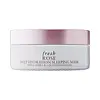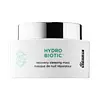What's inside
What's inside
 Key Ingredients
Key Ingredients

 Benefits
Benefits

 Concerns
Concerns

 Ingredients Side-by-side
Ingredients Side-by-side

Rosa Damascena Flower Water
MaskingWater
Skin ConditioningGlycerin
HumectantPentylene Glycol
Skin ConditioningPEG-60 Hydrogenated Castor Oil
EmulsifyingRosa Damascena Flower Extract
MaskingCucumis Sativus Fruit Extract
EmollientRosa Damascena Flower Oil
MaskingTocopherol
AntioxidantCarbomer
Emulsion StabilisingSodium Hydroxide
BufferingTetrasodium EDTA
Sodium Hyaluronate
HumectantMenthoxypropanediol
MaskingCaprylic/Capric Triglyceride
MaskingCaramel
Cosmetic Colorant1,2-Hexanediol
Skin ConditioningCaprylyl Glycol
EmollientPhenoxyethanol
PreservativeCitronellol
PerfumingGeraniol
PerfumingDicaprylyl Carbonate
EmollientPropanediol
SolventAmmonium Acryloyldimethyltaurate/Vp Copolymer
Dimethicone
EmollientOenothera Biennis Root Extract
Skin ConditioningTocopheryl Acetate
AntioxidantButylene Glycol
HumectantDimethicone/Vinyl Dimethicone Crosspolymer
Skin ConditioningPolyacrylamide
C13-14 Isoparaffin
EmollientHydroxylated Lecithin
EmulsifyingTrehalose
HumectantUrea
BufferingLaureth-7
EmulsifyingSerine
MaskingBetaine
HumectantInositol
HumectantTaurine
BufferingAlgin
MaskingBHT
AntioxidantAcacia Senegal Gum
MaskingGlyceryl Polyacrylate
Pullulan
Citric Acid
BufferingDisodium Phosphate
BufferingPotassium Phosphate
BufferingPotassium Sorbate
PreservativeRosa Damascena Flower Water, Water, Glycerin, Pentylene Glycol, PEG-60 Hydrogenated Castor Oil, Rosa Damascena Flower Extract, Cucumis Sativus Fruit Extract, Rosa Damascena Flower Oil, Tocopherol, Carbomer, Sodium Hydroxide, Tetrasodium EDTA, Sodium Hyaluronate, Menthoxypropanediol, Caprylic/Capric Triglyceride, Caramel, 1,2-Hexanediol, Caprylyl Glycol, Phenoxyethanol, Citronellol, Geraniol, Dicaprylyl Carbonate, Propanediol, Ammonium Acryloyldimethyltaurate/Vp Copolymer, Dimethicone, Oenothera Biennis Root Extract, Tocopheryl Acetate, Butylene Glycol, Dimethicone/Vinyl Dimethicone Crosspolymer, Polyacrylamide, C13-14 Isoparaffin, Hydroxylated Lecithin, Trehalose, Urea, Laureth-7, Serine, Betaine, Inositol, Taurine, Algin, BHT, Acacia Senegal Gum, Glyceryl Polyacrylate, Pullulan, Citric Acid, Disodium Phosphate, Potassium Phosphate, Potassium Sorbate
Water
Skin ConditioningDimethicone
EmollientPropanediol
SolventGlycerin
HumectantSodium Chloride
MaskingDimethicone/PEG-10/15 Crosspolymer
Lactococcus Ferment Lysate
Skin ConditioningHexyldecanol
EmollientInulin
Skin Conditioning1,2-Hexanediol
Skin ConditioningSodium Benzoate
MaskingYogurt Powder
PEG-10 Dimethicone
Skin ConditioningButylene Glycol
HumectantTamarindus Indica Seed Polysaccharide
Skin ConditioningSodium Citrate
BufferingCaprylhydroxamic Acid
Tocopheryl Acetate
AntioxidantLavandula Angustifolia Oil
MaskingTrisodium Ethylenediamine Disuccinate
Bisabolol
MaskingCetylhydroxyproline Palmitamide
Skin ConditioningStearic Acid
CleansingHoney
HumectantBrassica Campestris Sterols
EmollientRosa Damascena Flower Oil
MaskingCamellia Sinensis Leaf Extract
AntimicrobialPhenoxyethanol
PreservativeVitis Vinifera Seed Extract
AntimicrobialBoswellia Serrata Extract
Skin ConditioningHoney Extract
HumectantChlorophyllin-Copper Complex
AntioxidantAspalathus Linearis Extract
Skin ConditioningSaccharomyces Polypeptides
Skin ConditioningWater, Dimethicone, Propanediol, Glycerin, Sodium Chloride, Dimethicone/PEG-10/15 Crosspolymer, Lactococcus Ferment Lysate, Hexyldecanol, Inulin, 1,2-Hexanediol, Sodium Benzoate, Yogurt Powder, PEG-10 Dimethicone, Butylene Glycol, Tamarindus Indica Seed Polysaccharide, Sodium Citrate, Caprylhydroxamic Acid, Tocopheryl Acetate, Lavandula Angustifolia Oil, Trisodium Ethylenediamine Disuccinate, Bisabolol, Cetylhydroxyproline Palmitamide, Stearic Acid, Honey, Brassica Campestris Sterols, Rosa Damascena Flower Oil, Camellia Sinensis Leaf Extract, Phenoxyethanol, Vitis Vinifera Seed Extract, Boswellia Serrata Extract, Honey Extract, Chlorophyllin-Copper Complex, Aspalathus Linearis Extract, Saccharomyces Polypeptides
 Reviews
Reviews

Ingredients Explained
These ingredients are found in both products.
Ingredients higher up in an ingredient list are typically present in a larger amount.
1,2-Hexanediol is a synthetic liquid and another multi-functional powerhouse.
It is a:
- Humectant, drawing moisture into the skin
- Emollient, helping to soften skin
- Solvent, dispersing and stabilizing formulas
- Preservative booster, enhancing the antimicrobial activity of other preservatives
Butylene Glycol (or BG) is used within cosmetic products for a few different reasons:
Overall, Butylene Glycol is a safe and well-rounded ingredient that works well with other ingredients.
Though this ingredient works well with most skin types, some people with sensitive skin may experience a reaction such as allergic rashes, closed comedones, or itchiness.
Learn more about Butylene GlycolDimethicone is a type of synthetic silicone created from natural materials such as quartz.
What it does:
Dimethicone comes in different viscosities:
Depending on the viscosity, dimethicone has different properties.
Ingredients lists don't always show which type is used, so we recommend reaching out to the brand if you have questions about the viscosity.
This ingredient is unlikely to cause irritation because it does not get absorbed into skin. However, people with silicone allergies should be careful about using this ingredient.
Note: Dimethicone may contribute to pilling. This is because it is not oil or water soluble, so pilling may occur when layered with products. When mixed with heavy oils in a formula, the outcome is also quite greasy.
Learn more about DimethiconeGlycerin is already naturally found in your skin. It helps moisturize and protect your skin.
A study from 2016 found glycerin to be more effective as a humectant than AHAs and hyaluronic acid.
As a humectant, it helps the skin stay hydrated by pulling moisture to your skin. The low molecular weight of glycerin allows it to pull moisture into the deeper layers of your skin.
Hydrated skin improves your skin barrier; Your skin barrier helps protect against irritants and bacteria.
Glycerin has also been found to have antimicrobial and antiviral properties. Due to these properties, glycerin is often used in wound and burn treatments.
In cosmetics, glycerin is usually derived from plants such as soybean or palm. However, it can also be sourced from animals, such as tallow or animal fat.
This ingredient is organic, colorless, odorless, and non-toxic.
Glycerin is the name for this ingredient in American English. British English uses Glycerol/Glycerine.
Learn more about GlycerinPhenoxyethanol is a preservative that has germicide, antimicrobial, and aromatic properties. Studies show that phenoxyethanol can prevent microbial growth. By itself, it has a scent that is similar to that of a rose.
It's often used in formulations along with Caprylyl Glycol to preserve the shelf life of products.
Propanediol is an all-star ingredient. It softens, hydrates, and smooths the skin.
It’s often used to:
Propanediol is not likely to cause sensitivity and considered safe to use. It is derived from corn or petroleum with a clear color and no scent.
Learn more about PropanediolRosa Damascena Flower Oil is an essential oil made from the Damask Rose. It is often used as a fragrance in cosmetics.
Rose Oil has antibacterial and antioxidant properties due to its terpene, glycoside, flavonoid, anthocyanin, and Vitamin C content.
Other major parts of Rose Oil include citronellol and geraniol. Both of these are known EU allergens and cause contact-allergies.
The downsides of this ingredient outweight the positives.
Learn more about Rosa Damascena Flower OilTocopheryl Acetate is AKA Vitamin E. It is an antioxidant and protects your skin from free radicals. Free radicals damage the skin by breaking down collagen.
One study found using Tocopheryl Acetate with Vitamin C decreased the number of sunburned cells.
Tocopheryl Acetate is commonly found in both skincare and dietary supplements.
Learn more about Tocopheryl AcetateWater. It's the most common cosmetic ingredient of all. You'll usually see it at the top of ingredient lists, meaning that it makes up the largest part of the product.
So why is it so popular? Water most often acts as a solvent - this means that it helps dissolve other ingredients into the formulation.
You'll also recognize water as that liquid we all need to stay alive. If you see this, drink a glass of water. Stay hydrated!
Learn more about Water